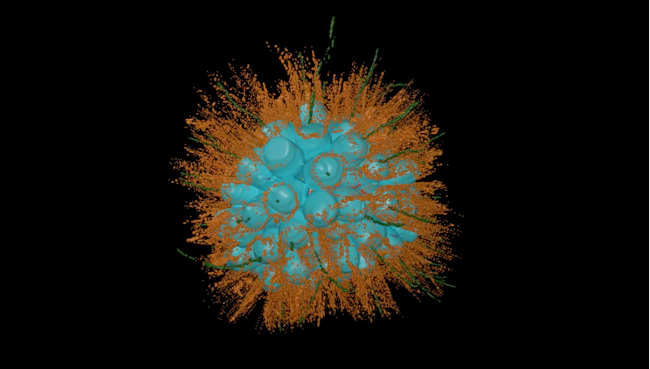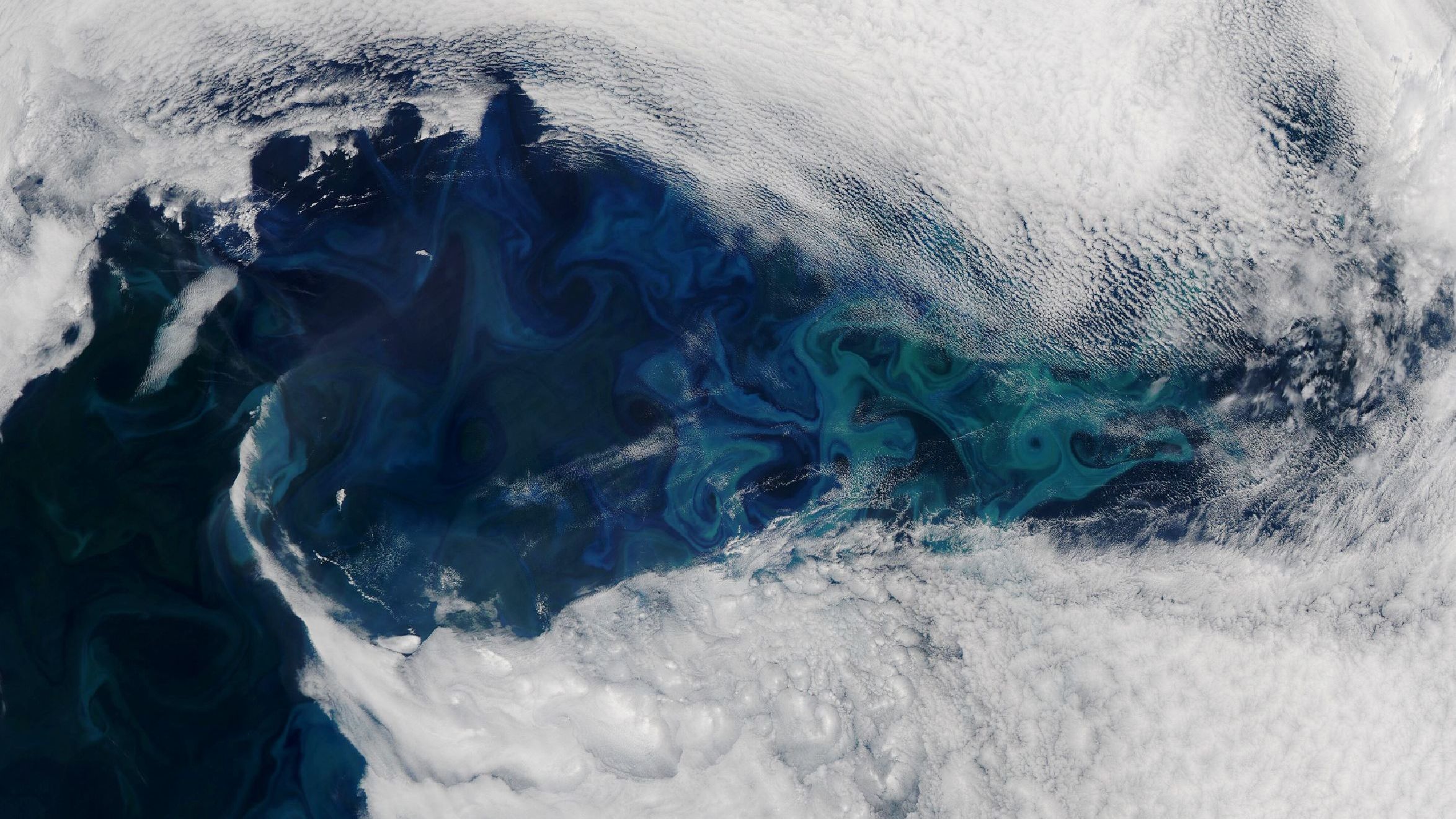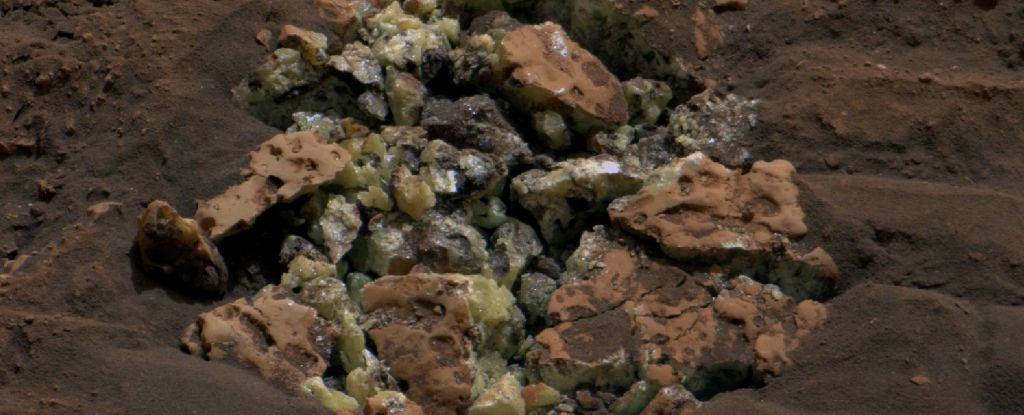Science
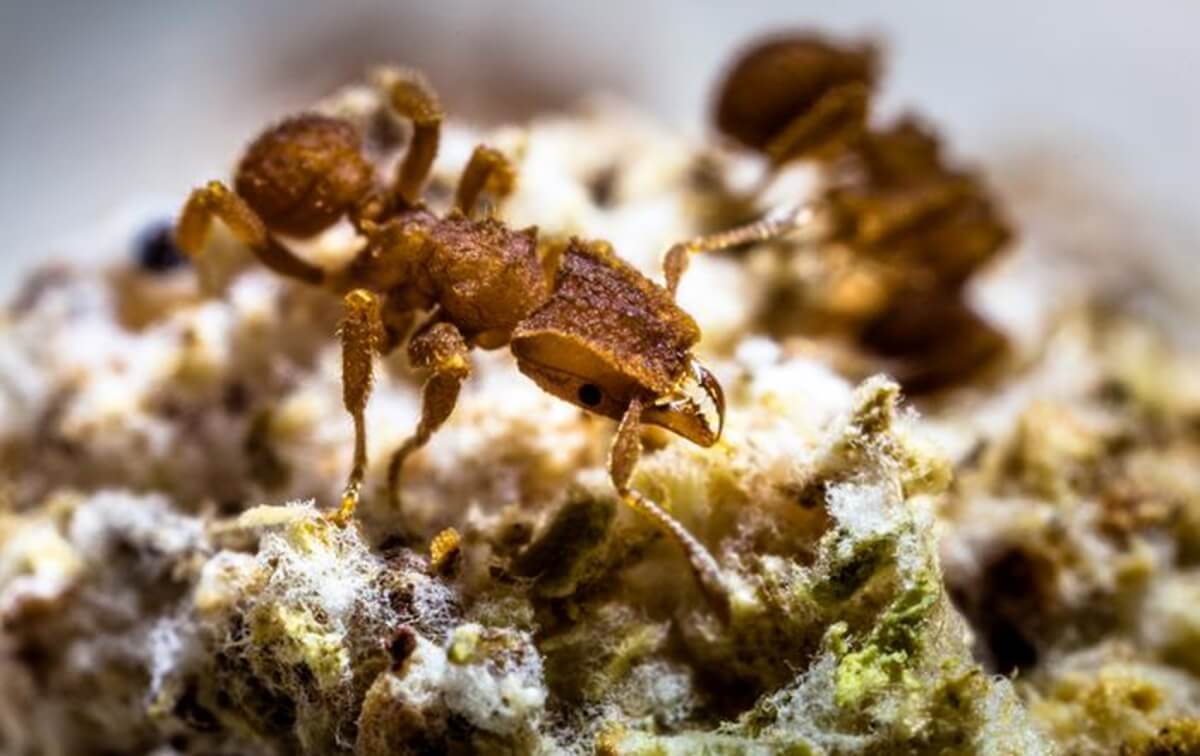 studyfinds.org
studyfinds.org
The asteroid that wiped out the dinosaurs also brought opportunities for new life. Scientists have found that after the asteroid wiped out many plants, ants started farming fungi to help them survive and get the food they needed in tough times. The meteor impact 66 million years ago created a low-light environment that allowed fungi that fed on organic matter to survive, as many plants and animals died. Additionally, the dust in the skies made it difficult for plants to undergo photosynthesis — converting light energy to make food. With the spread of fungus, researchers found it allowed fungus-farming ants to thrive in these dark times. The findings preview the start of the mutualistic relationship shared between several fungi species and ants. “The origin of fungus-farming ants was relatively well understood, but a more precise timeline for these microorganisms was lacking. The work provides the smallest margin of error to date for the emergence of these fungal strains, which were previously thought to be more recent,” says study co-author André Rodrigues, a professor at the Institute of Biosciences of São Paulo State University (IB-UNESP) in Brazil, in a media release. The study is published in the journal Science. Researchers studied the genetic remains of 475 fungal species cultivated by ants from all over the Americas. They narrowed their focus on ultra-conserved elements of the fungal genomes. These regions stay in the genome through the evolution of a group, genetic evidence that links back to the most ancient ancestors.
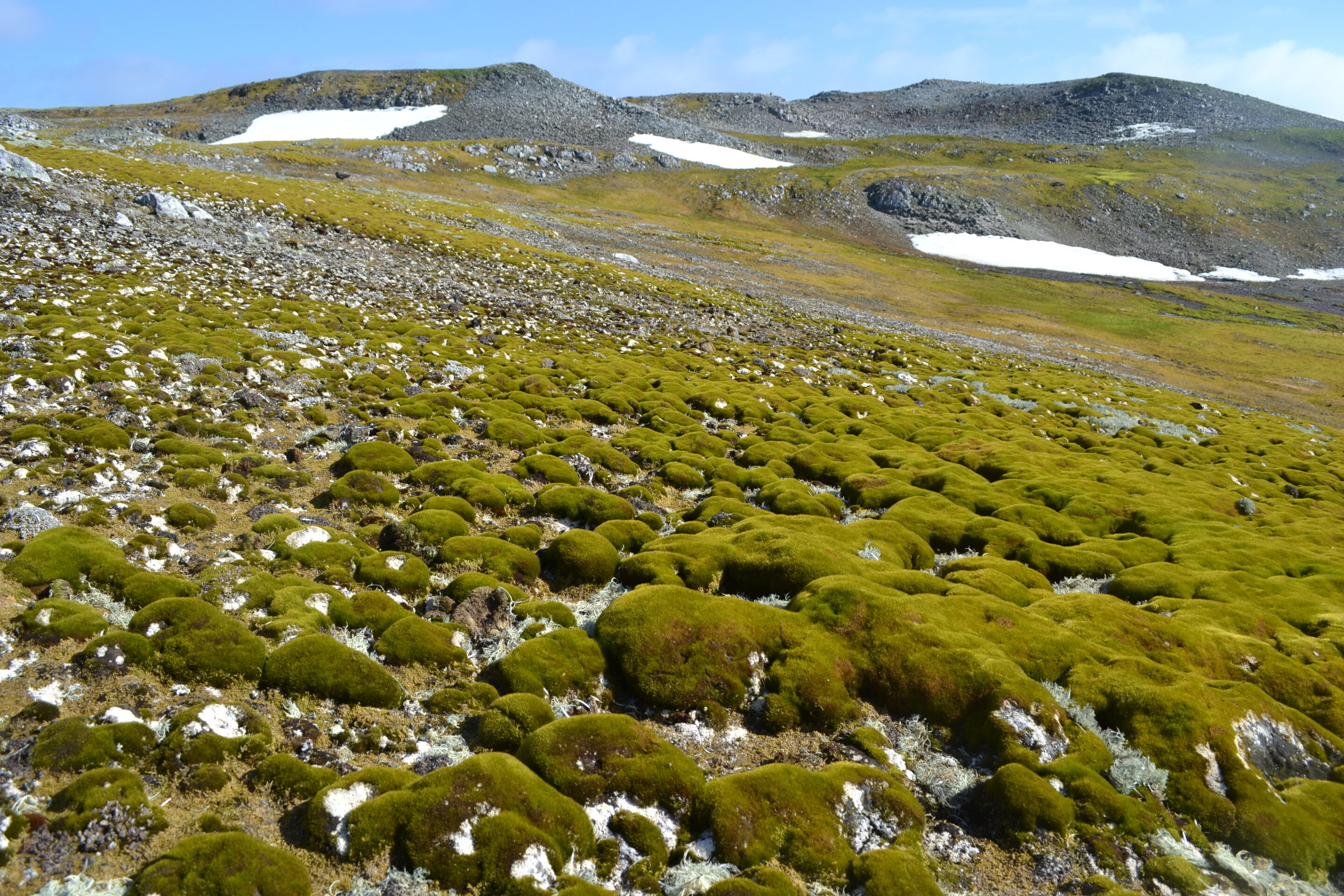 phys.org
phys.org
Vegetation cover across the Antarctic Peninsula has increased more than 10-fold over the last four decades, new research shows. The Antarctic Peninsula, like many polar regions, is warming faster than the global average, with extreme heat events in Antarctica becoming more common. The new study—by the universities of Exeter and Hertfordshire, and the British Antarctic Survey—used satellite data to assess how much the Antarctic Peninsula has been "greening" in response to climate change. It found that the area of vegetation cover across the Peninsula increased from less than one square kilometer in 1986 to almost 12 square kilometers by 2021. Published in the journal Nature Geoscience, the study also found this greening trend accelerated by over 30% in recent years (2016–2021) relative to the full study period (1986–2021)—expanding by over 400,000 square meters per year in this period. The paper is titled "Satellites evidence sustained greening of the Antarctic Peninsula." In a previous study, which examined core samples taken from moss-dominated ecosystems on the Antarctic Peninsula, the team found evidence that rates of plant growth had increased dramatically in recent decades. This new study uses satellite imagery to confirm that a widespread greening trend, across the Antarctic Peninsula, is under way and accelerating.
 edition.cnn.com
edition.cnn.com
Scientists have found that human beings age at a molecular level in two accelerated bursts – first at the age of 44, and then again at 60. In a study published in the journal Nature Aging, scientists at Stanford University and Nanyang Technological University in Singapore followed 108 participants over several years to observe aging changes in their molecules — RNA, proteins and participants’ microbiomes. The scientists found that human aging does not happen in a gradual, linear way. Rather, the majority of the molecules they studied showed accelerated, non-linear changes at the ages of 44 and 60. Xiaotao Shen, an assistant professor in microbiome medicine at Nanyang Technological University and first author of the study, told CNN that the results show “we are not becoming old gradually.” Some points in time are particularly important for our aging and health, he added. For example, the ability to metabolize caffeine notably decreases – first around the age of 40 and once more around 60. *Components involved in metabolizing alcohol also diminish,* particularly around the age of 40, Michael Snyder, chair of the department of genetics at Stanford and an author of the study, told CNN, referring to the two waves of aging. *Snyder added that, anecdotally, “people often get muscle injuries and see their fat accumulation hit in their 40s (related to lipid metabolism), and definitely sarcopenia (muscle loss) hit people in their 60s — this is a very big deal.”*
Generation X and millennials face a higher risk of getting certain types of cancer when compared to earlier generations, according to a large new study published Wednesday. In the study, published in the Lancet Public Health journal, researchers from the American Cancer Society (ACS) studied 34 of the most common cancers. They found that cancer incidence rates continued to rise in progressively younger generations in 17 of the cancers, including breast, pancreatic and gastric cancers. For eight of the 17 cancers, researchers found that cancer incidence rates rose for each successive birth cohort since 1920. For nine of them, incidence rates increased in younger cohorts, after first declining in older birth cohorts. “These findings add to growing evidence of increased cancer risk in post-Baby Boomer generations, expanding on previous findings of early-onset colorectal cancer and a few obesity-associated cancers to encompass a broader range of cancer types,” Hyuna Sung, lead author of the study, said in a statement. The study highlighted the need to identify and address the “underlying risk factors in Gen X and Millennial populations” to explain and address these rising cancer rates in younger generations, said Ahmedin Jemal, a senior author of the study. “Birth cohorts, groups of people classified by their birth year, share unique social, economic, political, and climate environments, which affect their exposure to cancer risk factors during their crucial developmental years,” Sung added.
 www.sciencealert.com
www.sciencealert.com
An international team of scientists has studied 33 years of satellite data and found that Earth is actually getting significantly greener as a result of rising carbon dioxide levels, with greater carbon emissions over the past three decades leading to a huge increase in the amount of leaves on plants and trees. "We were able to tie the greening largely to the fertilising effect of rising atmospheric CO2 concentration by tasking several computer models to mimic plant growth observed in the satellite data," said researcher Ranga Myneni from Boston University. But how are airborne pollutants spurring vegetation growth? The process, called the carbon fertilisation effect, results from leaves absorbing CO2 from the air as part of photosynthesis. With greater levels of carbon in the atmosphere, plants and trees and even crops actually grow faster, particularly in warm climates. And with the levels of carbon in the atmosphere as high as they are now, that's seen a massive increase in the amount of vegetation over the surface of the planet. "The greening over the past 33 years reported in this study is equivalent to adding a green continent about two times the size of mainland USA (18 million km2), and has the ability to fundamentally change the cycling of water and carbon in the climate system," said one of the team, Zaichun Zhu from Peking University in China. As a result of the growth in recent decades, vegetation now covers almost a third (32 percent) of the planet's total surface area, occupying about 85 percent of all ice-free land. But while extra greenery – and its ability to absorb atmospheric carbon – sounds like a positive for the environment, the scientists warn that this side effect of high carbon levels will only be temporary, and won't ultimately help against other consequences of climate change, such as severe weather, and rising temperatures and sea levels. "[S]tudies have shown that plants acclimatise, or adjust, to rising CO2 concentration and the fertilisation effect diminishes over time," said Philippe Ciais from the Laboratory of Climate and Environmental Sciences in France. Nor is CO2 the only factor behind the current green trends. The scientists say nitrogen use in agricultural fertilisers, climate change generally, and land management also contribute to the phenomenon in lesser amounts.
 www.theguardian.com
www.theguardian.com
Wild sharks off the coast of Brazil have tested positive for cocaine, according to new study by Brazilian scientists, in the latest research to demonstrate how illegal drug consumption by humans is harming marine life. According to a study entitled Cocaine Shark and published in the journal Science of the Total Environment, scientists dissected the bodies of 13 sharpnose sharks (Rhizoprionodon lalandii) caught in fishermen’s nets off a beach in Rio de Janeiro. All 13 tested positive for the drug. Previous studies have found cocaine in river, sea and sewage water, and traces of the drug have been found in other sea creatures such as shrimps. A separate study recently revealed that high levels of cocaine residue were causing “serious toxicological effects” in animals such as brown mussels, oysters and eels in Santos Bay, in the Brazilian state of São Paulo. But the concentration found in the Rio sharks was 100 times higher than had been found in other marine animals, the researchers said. How the cocaine ended up in the sharks remains a mystery.
 www.slideshare.net
www.slideshare.net
You can't disprove flat earth theory... or can you?
In his 11 years studying ant behavior, biologist Erik Frank had never seen anything like it. He and his colleagues at the University of Würzburg brought Florida carpenter ants back to their lab in Germany to learn how they respond to injury. Most ant species treat the injured or severed limb of a comrade by coating it with an antimicrobial goo. But the reddish-brown carpenter ants took a different tack: They bit the remainder of the limb off, effectively amputating it. Other animals, such as lizards, shed their own limbs to escape predators, but Frank says this is the first case of an insect severing the leg of a nestmate to save its life. The only other species that does this is humans. “I didn’t believe this at all because it was very counterintuitive,” he says. “I repeated the experiment four times before I accepted it.”
 edition.cnn.com
edition.cnn.com
The United States has been rocked by an extraordinary number of tornadoes and devastating storms this year that have already left a staggering price tag. Now heading into what forecasters say will be an extreme summer – from punishing heat waves to severe weather and hurricanes – the nation’s disaster relief agency is expected to run out of money before it’s even over. The US has been thrashed with 11 extreme weather disasters with costs exceeding $1 billion so far this year, with a total price tag of $25.1 billion, according to an updated tally from the National Oceanic and Atmospheric Administration. It’s tied for the second-most such disasters on record and doesn’t even include the extreme weather in the second half of May, said Adam Smith, an applied climatologist with NOAA. ... FEMA’s tenuous balance sheet reflects how many destructive storms have already lashed the US. This spring produced the second-most tornadoes to-date since records began in 1950, according to the Storm Prediction Center. Tornado activity skyrocketed from late April through May, with more than 780 confirmed tornadoes cutting across the central and eastern US during April and May, the SPC said. ... A chorus of expert voices are calling for an above-average Atlantic hurricane season as anxiety-inducing conditions in the atmosphere and oceans align. Record-breaking ocean heat is expected to feed hurricanes, helping them form, strengthen and survive. El Niño is predicted to give way to La Niña and create more favorable atmospheric conditions for storms to thrive. Just about every kind of extreme weather is possible during summer, including more severe thunderstorms. June is the third-most active month for tornadoes in the US, according to the SPC. It’s also the most-active month for destructive and costly severe hail, a 2012 study found.
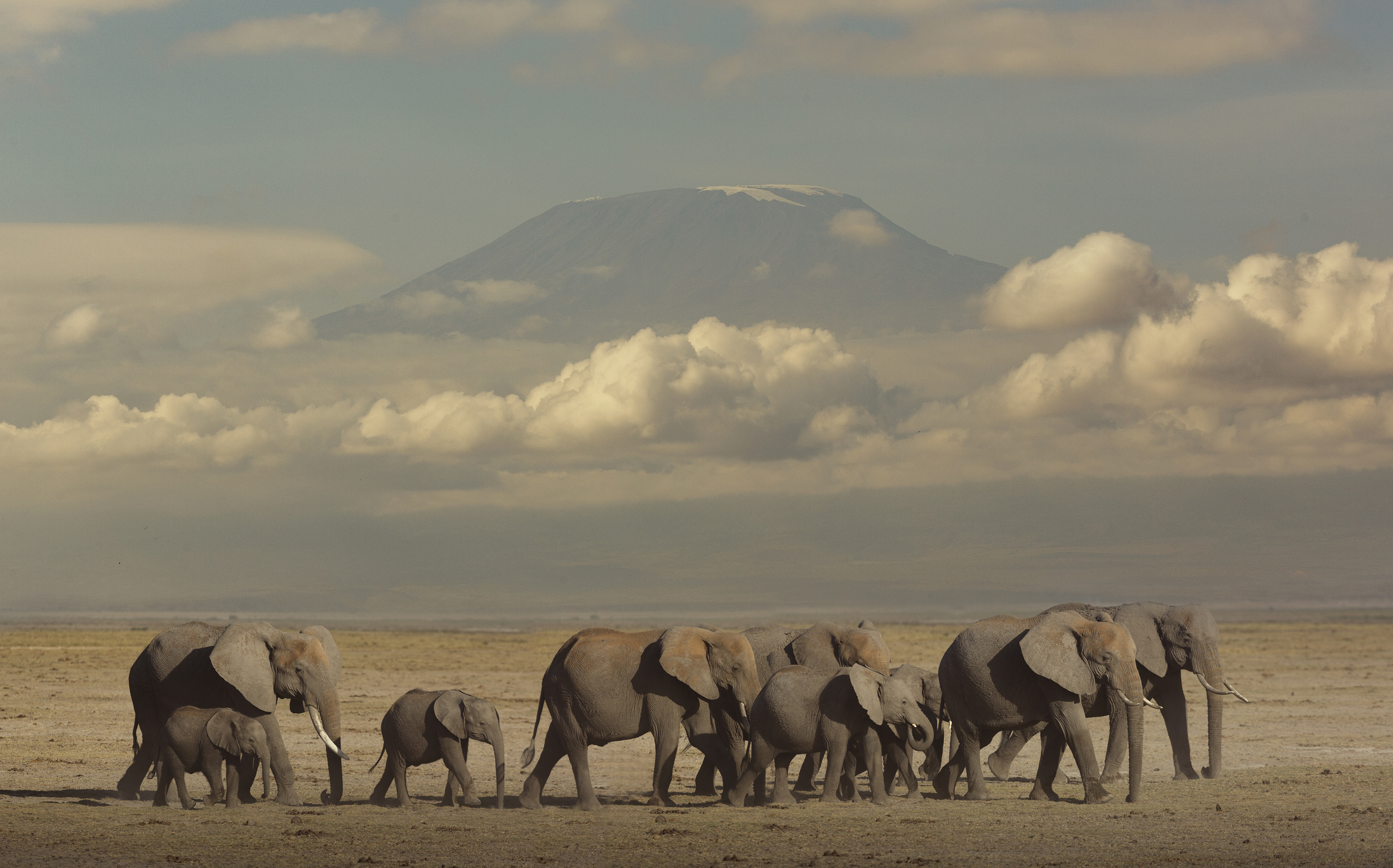 arstechnica.com
arstechnica.com
Lots of animals communicate with each other, from tiny mice to enormous whales. But none of those forms of communication share even a small fraction of the richness of human language. Still, finding new examples of complex communications can tell us things about the evolution of language and what cognitive capabilities are needed for it. On Monday, researchers reported what may be the first instance of a human-like language ability in another species. They have evidence that suggests that elephants refer to each other by individual names, and the elephant being referred to recognizes when it's being mentioned. The work could benefit from replication with a larger population and number of calls, but the finding is consistent with what we know about the sophisticated social interactions of these creatures. ... he researcher worked with recordings of elephant calls made in three distinct social contexts. One was a contact call, made when a group member is far enough away that they are no longer visible and was used to re-establish contact. A second is greeting calls, which are made when an individual approaches another. And the third was a caregiving call given to young offspring within the group. Calls were used for analysis if the researchers could clearly identify a recipient of the call. The rumbles elephants produce are harmonically complex, and it's difficult to identify important features by looking over things like frequency plots. So, the researchers used two methods of examining them. One was a machine-learning approach called a random forest model that can be used for classification tasks. Separately, they used audio analysis software to identify the degree to which any two calls share common features. Once the system was set up, it correctly identified the recipient in over a quarter of the calls analyzed, much higher than would be expected based on random chance. That may seem low, but recall that it may not always be necessary to call out an individual's name each time you communicate with them. The researchers also analyzed calls from one individual directed toward another. They had higher levels of similarity to each other than they did to any calls to different individuals. This was true regardless of social relationships among the individuals or the context in which the call was being made. Social context also mattered as it was easier to detect names in contact and caregiving contexts.
 www.bbc.com
www.bbc.com
Beachgoers in the Gulf Coast of Florida have been told to be vigilant, after three swimmers were attacked by sharks in two separate attacks. One woman was said to have had part of her arm amputated after being bitten on Friday in Walton County in north-west Florida. Less than two hours later, at another beach four miles further east, two teenage girls were in waist-deep water with friends when they were attacked. One of the girls suffered "significant injuries to the upper leg and one hand" while the other had minor injuries on one of her feet, fire officials said.
 www.raweggstack.com
www.raweggstack.com
"The Pill" may be negatively impacting and altering women's mental lives. >The authors of that study explained how hormonal birth control appears to shrink an important region of the brain, the ventromedial prefrontal cortex, that’s associated with fear and emotional processing more broadly. >>In our study, we show that healthy women currently using COCs had a thinner ventromedial prefrontal cortex than men. >>This part of the prefrontal cortex is thought to sustain emotion regulation, such as decreasing fear signals in the context of a safe situation. Our result may represent a mechanism by which COCs could impair emotion regulation in women. >What the researchers found was that the ventromedial prefrontal cortex in women who were currently using COCs was significantly thinner compared to men. >Interestingly, this reduced thickness was not observed in women who had discontinued use of COCs in the past. This suggests that the behavioural changes may be reversible if use of the Pill ceases. >The possibility that this thinning effect might be reversible is the only potential silver lining to this study, which otherwise suggests that the Pill really may be having profound effects on the behaviour of the tens of millions of women—and hundreds of millions worldwide—who take it.
 www.technologyreview.com
www.technologyreview.com
Brain organoids, clumps of human brain cells grown in a dish, can be hooked up to an electronic chip and carry out simple computational tasks, a new study shows. Feng Guo and his team at Indiana University Bloomington generated a brain organoid from stem cells, attached it to a computer chip, and connected their setup, known as Brainoware, to an AI tool. They found that this hybrid system could process, learn, and remember information. It was even able to carry out some rudimentary speech recognition. The work, published today in Nature Electronics, could one day lead to new kinds of bio-computers that are more efficient than conventional computers. Scientists have been trying to build computers based on advanced biological systems for decades. Guo says that such computers could overcome some challenges of silicon-based computers, such as bottlenecks in data processing. Conventional computers are much better than brains in dealing with numbers, but human brains are better at processing complex information while using relatively little energy. “This is a first demonstration of using brain organoids [for computing],” says Guo. “It’s exciting to see the possibilities of organoids for biocomputing in the future.”
>THE MUNGESHPUR weather station in Delhi recorded a maximum temperature of 52.9 degree Celsius on Wednesday, an all-time record for any location in India, prompting the Met office to rush its scientists to check the authenticity of the reading. >The Safdarjung weather observatory, which serves as the marker for the entire city, registered a maximum temperature of 46.8 degree Celsius on Wednesday, the highest in 80 years. It was six degrees higher than the normal expected at this time of the year, and the highest that the station has recorded since 1944. But it was substantially lower than the temperature at Mungeshpur, located on the northern outskirts of Delhi, bordering Haryana. >“The maximum temperature over Delhi NCR varied from 45.2 degree Celsius to 49.1 degree Celsius in different parts of the city. Mungeshpur reported 52.9 degree Celsius as an outlier compared to other stations. It could be due to an error in the sensor of local factors. IMD is examining the data and sensors,” the India Meteorological Department said in a statement. This is not a story denying the heatwave in Delhi but rather about how one particular station for measuring temperatures may have been a bit off... Or *maybe not.* After all, other palces were getting it right: >Najafgarh station recorded 49.1 degree Celsius, the highest for any Delhi observatory on Wednesday, while Pusa Road recorded 49 degree Celsius.
 www.bbc.com
www.bbc.com
Even at -40C (-40F), smoke kept billowing from under the snow. All through the winter, Marty Wells, a wolf trapper and fire crew leader, would see plumes of white as he drove north out of Fort Nelson, British Columbia in Canada. He found melt holes venting like hot springs, and flames licking at the foot of white-encrusted trees in the muskeg bogs. In places the ground was burning a foot (30cm) deep or more. "It gets in the muskeg and burns the muskeg and then it crawls, it creeps underground is what happens, and then pops up somewhere else," Wells says. When the snow melted in early May, these smouldering fires, often called "zombie" fires, came to life again and began to feed on dry trees and brush. The plumes of smoke north of Fort Nelson became a conflagration of 700 sq km (270 sq miles). The town is now caught in a horseshoe of fire: to the east, another zombie fire has burned an even larger area, while to the west, a new wildfire has encroached to within 2.5km (1.6 miles) of the community, damaging properties. Residents have been evacuated. Wells says he didn't expect the fire to get this bad. "It just happened that day that we had really high winds and right conditions and away it went." Canada's boreal zone – a mixture of forest and wetlands – makes up more than half of its land area. Wildfires burned a record 185,000 sq km (71,429 sq miles) of the country in 2023, an area the size of Syria. In western Canada, many of these fires went underground and smouldered until this spring, which fire services refer to as "overwintering" or "holdover" fires. Much of Canada is in its third year of drought, with the western provinces of Alberta, British Columbia and the Northwest Territories the worst hit. Snowpack, the main source of water, was 37% lower than normal in British Columbia this winter, and powerful rivers shrivelled into thin veins of blue. As the snow melted and windy weather arrived to fan the flames in April and May, these zombie fires tore into a smorgasbord of dry fuel. With hotspots flaring up around old burn areas in north-west Alberta, the province had to declare an early start to the fire season on 20 February, rather than the usual 1 March. Mike Flannigan, a professor of wildland fire at Thompson Rivers University in British Columbia who has been monitoring fires there since the 1970s, says he's never seen an outbreak of zombie fires like this one. "This year, it's extremely significant," he says. "British Columbia has hundreds of thousands of hectares burned, and most of those are due to overwintering fires." Scientists believe that zombie fires are becoming more common, and that they are a symptom of the growing frequency and intensity of wildfires due to human-caused climate warming. But these fires also kick off the fire season earlier and could potentially result in more carbon emissions per area burned.
 www.bbc.com
www.bbc.com
Eagles changed their migration routes across Ukraine to avoid fighting and because their habitats were likely damaged or destroyed by war, say scientists. The researchers believe the Greater Spotted Eagles skirted around dangers including artillery fire, jets and tanks as well as buildups of troops. They fly through Ukraine every Spring on their way from Greece and The [Sudd](https://en.wikipedia.org/wiki/Sudd) - a large wetland in South Sudan - to breeding grounds in Belarus. The scientists studied GPS data from tagged birds in the months after the February 2022 invasion, a time of heavy fighting in northern Ukraine as Russia tried to take Kyiv by sending troops south from Belarus.
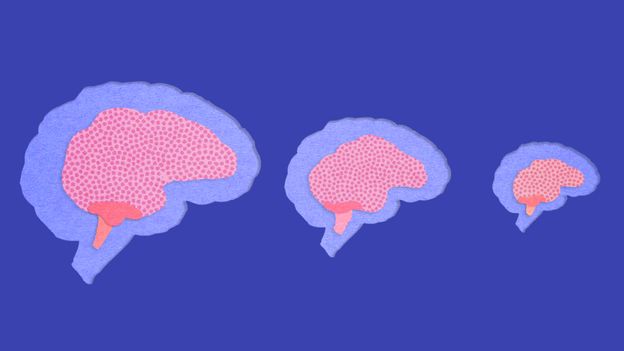 www.bbc.com
www.bbc.com
The brains of modern humans are around 13% smaller than those of Homo sapiens who lived 100,000 years ago.Exactly why is still puzzling researchers. Traditionally our "big brain" is thought to be what sets our species apart from other animals. Our capacity for thought and innovation allowed us to create the first art, invent the wheel, and even land on the Moon. Certainly, when compared with other animals of a similar size, our brains are gigantic. The human brain has nearly quadrupled in size in the six million years since our species last shared a common ancestor with chimpanzees. However, studies show this trend toward larger brains has reversed in Homo sapiens. In our species, average brain sizes have shrunk over the course of the last 100,000 years. For example in a recent 2023 study, Ian Tattersall, a paleoanthropologist and curator emeritus with the American Museum of Natural History in New York City, tracked the braincase volumes of ancient hominins through time. He started with the oldest known species, and ended with modern humans. He found that rapid brain expansion occurred independently in different species of hominins, and at different times across Asia, Europe and Africa. Species whose brains grew over time include Australopithecus afarensis, Homo erectus, Homo heidelbergensis, and Homo neanderthalensis. However, the trend for brain enlargement over time was turned on its head with the arrival of modern humans. The skulls of men and women today are on average 12.7% smaller than that of Homo sapiens who lived during the last ice age. "We have very peculiarly shaped skulls, so early humans are very easy to recognise – and the very first ones have extremely large brains," says Tattersall. Tattersall's finding replicates those of others. For example in 1934, Gerhardt Von Bonin, a German-born scientist affiliated with the University of Chicago at Illinois, wrote that "there is a definite indication of a decrease [in the human brain] at least in Europe within the last 10,000 or 20,000 years." So how can we explain this striking reduction? Tattersall suggests that the shrinkage in brain size began around 100,000 years ago, **which corresponds to a period of time in which humans switched from a more intuitive style of thinking to what he terms "symbolic information processing" – or thinking in a more abstract way to better understand your surroundings.** "This was the time when humans began producing symbolic artefacts and engravings with meaningful geometric images," says Tattersall. **Tattersall believes that the catalyst that caused this change in thinking style was the spontaneous invention of language. This led to the neural pathways of the brain being reorganised in a more metabolically efficient way, allowing humans to get more "bang for their buck".** In other words, as smaller and better organised brains were able to perform more complex computations, metabolically expensive larger brains simply became unnecessary.
The weather pattern known as El Nino is having devastating effects in South America. Unusually dry weather has led to water rationing and even power cuts. Colombia's capital city of Bogota is now rationing water for the first time in decades. Manuel Rueda has a story. ... MANUEL RUEDA, BYLINE: Steven Ramos (ph) runs a coffee shop outside el Externado, a large university in Bogota. But today there's no tap water, so he can't use his espresso machine. Instead, Ramos makes filtered coffee for his customers using a large bottle of water. STEVEN RAMOS: (Speaking Spanish). RUEDA: "Many people aren't going to their offices or to the university on the days without water," he says. "So my sales are suffering." (SOUNDBITE OF VEHICLE RUMBLING) RUEDA: Officials in Colombia's capital began to ration water this month by dividing the city into nine areas that are cut off from the water supply on a rotating basis. The drought has depleted local reservoirs and officials are trying to limit water consumption to give them time to recover. NATASHA AVENDANO: It's been very dry and very hot. RUEDA: Natasha Avendano runs Bogota's water company, the EAAB. AVENDANO: Both things have led us to have higher levels of evaporation of water. And of course, people consume more water because it's been very, very hot. RUEDA: To reduce consumption, Bogota officials aren't just rationing water, they're also asking people to change their habits. AVENDANO: No car washing, no floor washing. We need to take care of every drop of water. (SOUNDBITE OF BIRD TWEETING) RUEDA: Climate experts say the dry weather in Bogota and much of Colombia is due to warming temperatures in the Pacific Ocean, which are known as El Nino events. This weather pattern happens every two to seven years. And it can have drastic effects around the world, especially in South America says Andrea Devis, an oceanographer in Bogota's Rosario University. ANDREA DEVIS: We have a lot of rain along the coast during El Nino, the Pacific rains a lot. But on the other side of the Cordillera, we don't have any rain because all the rain was poured in the Pacific Coast. RUEDA: The current El Nino event began last June. In Chile, dry weather contributed to forest fires in February. And in Ecuador, officials declared a state of emergency last week and began to ration electricity because of the lack of rainfall. Seventy-five percent of Ecuador's electricity comes from hydroelectric plants, but the dams in the mountains are at historic lows.
 www.sciencealert.com
www.sciencealert.com
Researchers have turned carbon dioxide (CO2) into solid rock by injecting volcanic basalt rock with pressurised liquid CO2, and letting natural chemical reactions trigger the transformation. The technique, which takes two years to achieve, gives scientists another option for capturing and storing the excess CO2 humans are pumping into the atmosphere – and could one day be scaled up to take significant levels of carbon out of circulation. The research was conducted by a team from the the US Department of Energy's Pacific Northwest National Laboratory (PNNL), and builds on a similar experiment in Iceland earlier this year, which dissolved CO2 in water and injected it into a basalt formation. In the latest study, undiluted CO2 was used, and much more of it was stored at once: 1,000 tonnes of fluid carbon dioxide. The PNNL team had already shown that the chemical reactions could happen in lab conditions, but until now, they didn't know how long the reactions would take in a real-world setting. "Now we know that this mineral trapping process can occur very quickly, it makes it safe to store CO2 in these formations," says researcher Pete McGrail. "We know now that in a short period of time the CO2 will be permanently trapped."
 www.greatamericaneclipse.com
www.greatamericaneclipse.com
> On April 8, 2024, the shadow of the Moon will cross Mexico, the United States, and Canada. This spectacular total solar eclipse will amaze many millions of people. This is sure to be a record-setting astronomical event. Anyone in the path of totality or if not planning to watch or excited for this eclipse event passing through America in a couple days?


